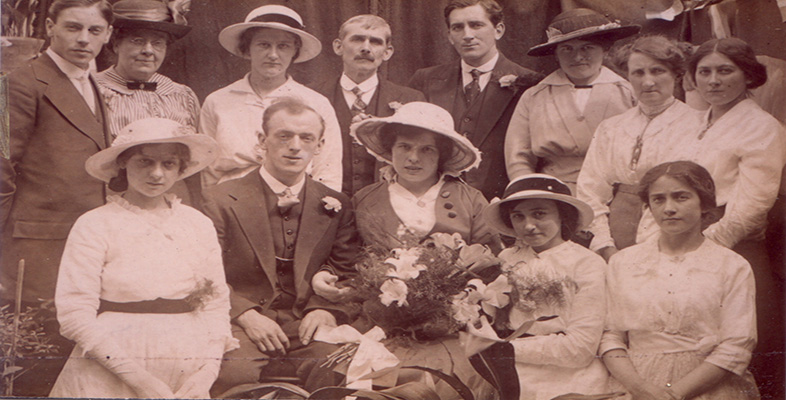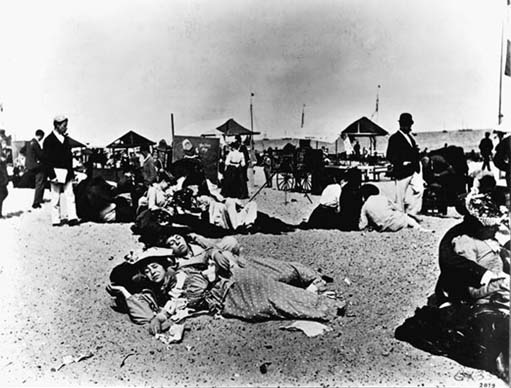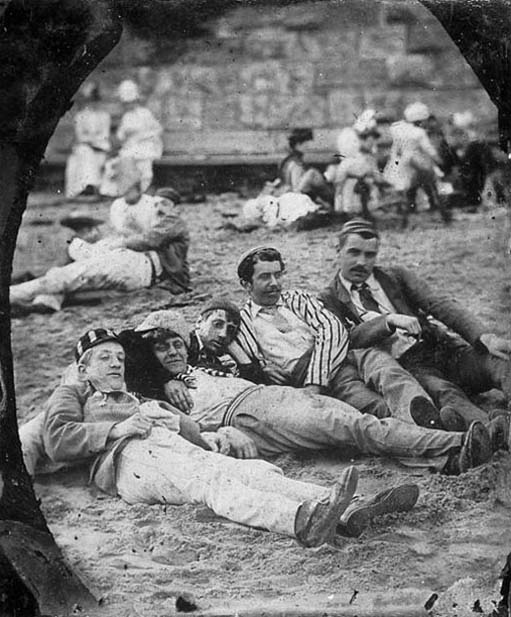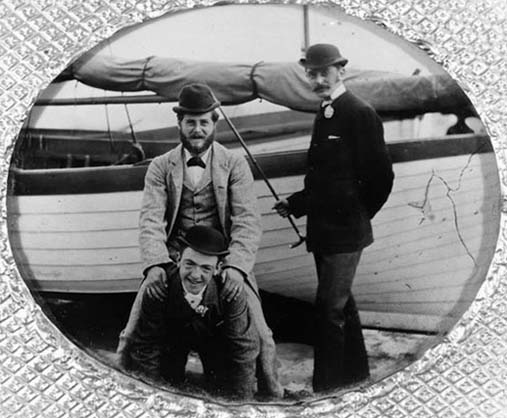Activity 26
Mainstream photographers, as we have seen, identified with traditions in the fine arts and aspirations of refinement and moral improvement. However, fairground and seaside operators exploited photography as a form of cheap popular entertainment. This and the fact that itinerants usually worked on spec rather than to commission ensured that they were generally viewed with contempt by the photographic establishment.
Contempt pervades the article entitled ‘Five minutes in a photographic caravan’ which appeared in The Photographic News in 1886. Click on 'View document' below to read the article, then note down your answers to the following questions.
View document [Tip: hold Ctrl and click a link to open it in a new tab. (Hide tip)]
Activity 26a
How does the author convey the idea that the itinerant is an inferior photographer?
Answer
Our author barely misses an opportunity to put the itinerant down. The description of the itinerant's studio emphasizes that it was mean, cramped and dirty. The comparison is with a ‘third-class carriage on the South Eastern Railway’. The lady is dressed in ‘seedy’ black; the photographer has dirty fingers and makes dirty marks on the walls.
Similarly the author's description of the photographer's technique is a put-down from beginning to end. The photographer is described as ‘profoundly indifferent’ to expression and careless about pose. These we know were the most important considerations for any portrait photographer worthy of the name. Backdrops and props were non-existent and the lighting hard and glaring. The itinerant, we are told, had no polite conversation nor social manners, unable even to say Thank you’ where appropriate. The author's repeated use of the word ‘artist’ conveys heavy sarcasm.
Activity 26b
How does the behaviour of the ‘frolicsome’ foursome compare with what we know of the behaviour of couples in conventional studios?
Answer
The author adopts a superior tone, and his report of the behaviour of the young couples is intended to reflect badly on the itinerant and the couples themselves. Readers are carefully informed that they are working class because of their accents.
Although they are not married the ladies consent to sit on the gentlemen's laps. Sarcasm is apparent in the use of these courtesy titles to describe such behaviour. The ‘ladies’ later permit further familiarities in allowing the ‘gentlemen’ to ‘playfully’ arrange their bonnets. Such behaviour contrasts with the absence of any meaningful physical contact in conventional studios.
Activity 26c
How do the foursome manage to turn photography into entertainment?
Answer
The foursome crack jokes and playfully call for beer. In the end they decide against a picture and go to look for something to eat – another form of indulgence. They are clearly out to enjoy themselves and photography is just part of the fairground's many attractions.
As they seek fun and entertainment, their behaviour in no way mirrors the formal, sober proprieties that characterized proceedings in the high-street studio.
The question to ask ourselves is whether this description is simply the result of prejudice and bias against ‘low-class’ operators or whether the description does reflect a different attitude to photography which can be detected in portraits from the seaside.
Activity 27
What does Paul Martin's picture tell us about the behaviour of the Victorians at the seaside?
Answer
Visitors to the fairground and seaside in the 19th century were on holiday, in carefree mood, intent on little self-indulgences and a bit of fun.
Activity 28
The atmosphere of these holiday venues gradually filtered through to the portraits taken there. Judging by Images 92 and 93, what effect did this relaxed atmosphere have on the photographs taken at the seaside?
Answer
Poses are considerably more relaxed than the conventions of formal portraiture would permit. Young males in particular felt able to indulge in horseplay in front of the camera at the seaside. Smiles and grins break out on the faces of the holidaymakers. In time, the portraits taken by professional photographers at the seaside came to mock the sober respectability of the high-street studio.



